Three months ago I had an interview with a textile expert from Barcelona, Oscar Tomico. When I asked him about the future of textiles and what would be popular in 10 years he gave the following response:
‘’I think bio-textiles that are based on bioplastics, textiles that are based on reusing materials, even reusing old textiles. For me the most important now is a trend that is going to be even accentuated now in the situation we are, it is gonna be about the use of local and circular materials. And I think this is gonna be a big big trend and I hope that that would be the key thing in 20 years from now, because if not we are fucked.’’
Oscar Tomico, March 2020
WHAT IT IS?
So yes, here we are, 3 months later and I found a lot of cool seeds that really show that the trend of circular economy is on the rise. The Global transformation of finding new ways to reuse materials and to develop new kinds of materials is currently happening as we speak. Therefore, the new trend is resulting into a shift towards a world of sustainable fashion.
WHY IT´S COOL?
- This development is a development which is happening around the whole world. This is because we are globally involved in the sustainability problem and therefore we have to find solutions. We have to find solutions to make our world more durable and be kind for the earth. It is great to see all of these cool and inspiring new materials that are becoming more popular. The trend of sustainability shows that we can make fashionable items with everyday items that we have laying around the house. In addition, this shows how far we are out of a technological perspective. Without the use of technology these kinds of innovations wouldn’t be possible. This makes it cool because this shows us that developments in the world are constantly connected with each other.
I will introduce you to some of the cool seeds that show this shift to bio-fashion.
Haute couture created out of seaweed
Diverse companies are creating haute couture by using a new biodegradable and carbon-neutral textile that exists out of seaweed. For example, the New York-based company Algiknit makes from the algae of seaweed Bioyarn which is an eco-alternative material. (Hitti, Jasmine Linington uses seaweed to make couture clothing, 2019)
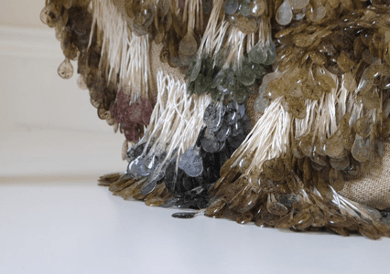
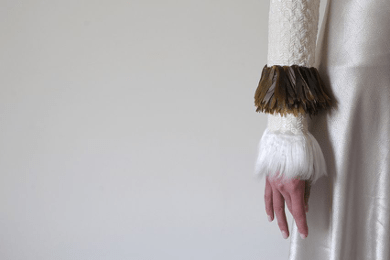
Blood leather
Natalie Zipfl made a new sustainable material out of pig blood and gelatin. This material can be disposed of in a sustainable way through biodegradation.
(Dezeen Staff, 2020)
Basse Stittgen did something similar while he used blood leftovers from the meat industry to design small objects. He found out that slaughterhouses discard billions of litres of animal blood yearly. Because of this, he wanted to explore if animal blood could be used to create a new environmentally friendly material. He created objects from it, but this could turn into something interesting for the fashion industry. The objects he created are 100 per cent made of blood. (Frearson, 2017)
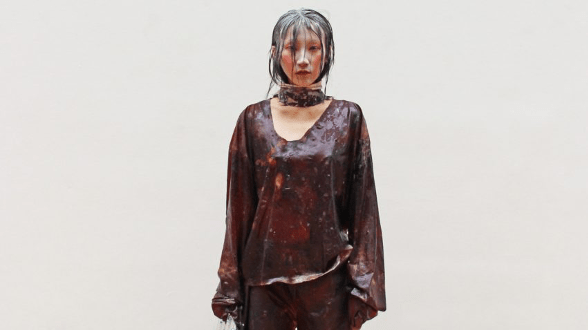
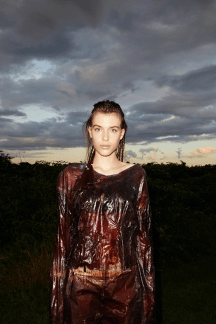
Material made out of pig bladders and cow intestines
And look at this material made out of pig bladders and cow intestines. This has been created into furniture but what if we can also make fashion out of it? The aim of this work was to use every part of animals instead of treating these parts as waste which makes them also sustainable and environmentally friendly. (Hitti, 2018)
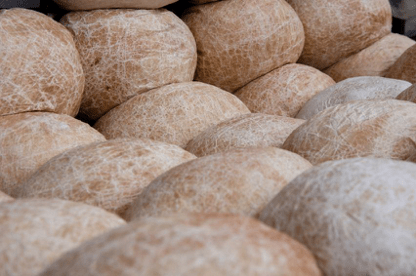

“The fashion industry, like many others, is struggling to satisfy competing demands for performance and sustainability,” explained Klein. “On the one hand, consumers want products with better performance properties, and on the other, they are demanding more sustainable materials and production methods. Traditional materials cannot meet both demands, but biofabricated materials can.”
(FERNÁNDEZ, 2020)
It is cool that biofabricated materials meet two consumer needs that are coming up right now.
WHY IT HAS FUTURE GROWTH POTENTIAL?
As Oscar Tomico said in our interview, we will be ”fucked” if we do not change something on the way we produce our fashion right now. Also because our current fashion industry is responsible for ten percent of all CO2 emissions (Schipper, 2019six designers changing the future of fashion)
We still have to go a long way until these kinds of sustainable fashion trends become mainstream, but one of the interesting challenges is to make the shift from prototypes to an industrial scale on the global market. It will be a challenge to make these products available and affordable on a larger scale.
‘’It will take time. After all, it took decades since nylon was developed in the 1930s until it became as ubiquitous as it is today. But the future of fashion is already here, and biology is the future.’’
(FERNÁNDEZ, 2020)
I think biofabrication will have a lot of future growth potential because we really have to change something in the world if we want to combat pollution, climate change and fast fashion. Every day we are confronted on social media, tv, newspapers that our world is slowly giving up on us so we have to come up with solutions and not only find solutions but also bring them into practice.
I am curious about the future of fashion and if this kind of fashion will become mainstream. What do you think? Would you wear a t-shirt which is made from pig blood?
Bibliography
Yousef, I. (2013, May 16). Fabric made from fermented wine . Retrieved from Uttu textiles : https://uttutextiles.wordpress.com/2013/05/16/fabric-from-fermented-wine/#:~:text=A%20group%20of%20scientists%20at,extracted%20and%20made%20into%20clothing.
MAPSZ. (2016). circulaire mode gemaakt van zalmhuid. Retrieved from MAPSZ: https://www.mapsz.nl/portfolio/jas-jurk-tas/
Atlantic Leather . (n.d.). The story behind atlantic leather. Retrieved from Atlantic Leather : http://www.atlanticleather.is/thestory
Frearson, A. (2017, December 6). Animal blood used by Basse Stittgen to create series of small objects. Retrieved from Dezeen: https://www.dezeen.com/2017/12/06/blood-related-basse-stittgen-objects-design-academy-eindhoven/
Dezeen Staff. (2020, June 6). Blood leather by Natalie Zipfl. Retrieved from Dezeen: https://www.dezeen.com/2020/06/06/blood-leather-natalie-zipfl-austrian-fashion-vdf/
Hitti, N. (2018, May 26). Tobias Trübenbacher creates furniture from pig bladders and cow intestines. Retrieved from Dezeen: https://www.dezeen.com/2018/05/26/tobias-trubenbacher-creates-furniture-from-pig-bladders-and-cow-intestines/
Hitti, N. (2019, August 7). Jasmine Linington uses seaweed to make couture clothing. Retrieved from Dezeen: https://www.dezeen.com/2019/08/07/jasmine-linington-seaweed-girl-couture-clothing/
FERNÁNDEZ, C. R. (2020, February 25). How Biotechnology Is Changing the Way We Make Clothes. Retrieved from labiotech: https://www.labiotech.eu/industrial/biofabrication-fashion-industry/
Schipper, M. (2019six designers changing the future of fashion, February 8). Bio textiles: meet . Retrieved from Nextnature: https://nextnature.net/2019/02/bio-textiles




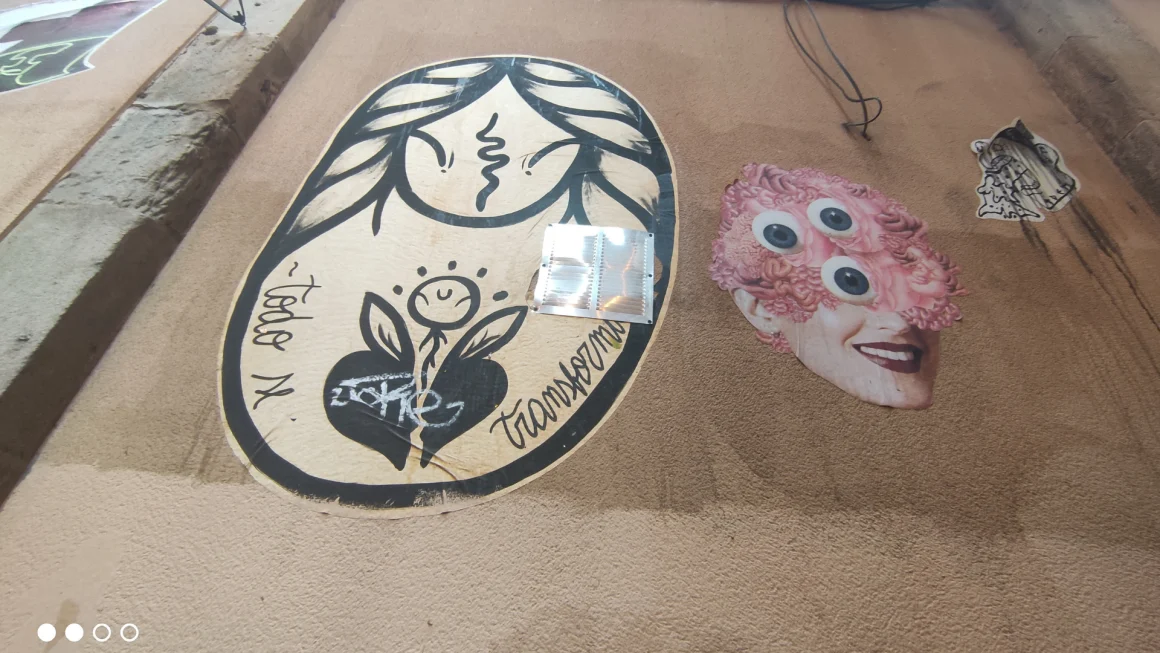

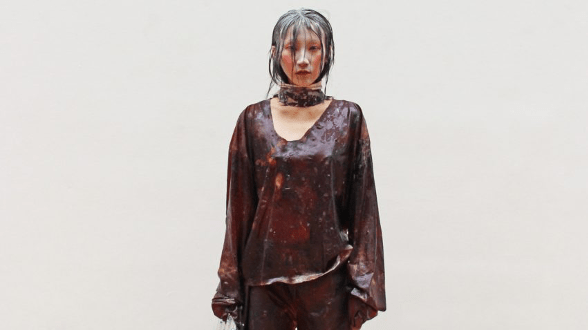
Liza Peeters
Linda
– Linda
Carl
These are no criticisms. And I definitely don’t want to demotivate you. On the contrary, your blog has so much future growth potential that you should re-work it. Is this helpful? Greets. Carl
Floor Leijten
Greets, Floor